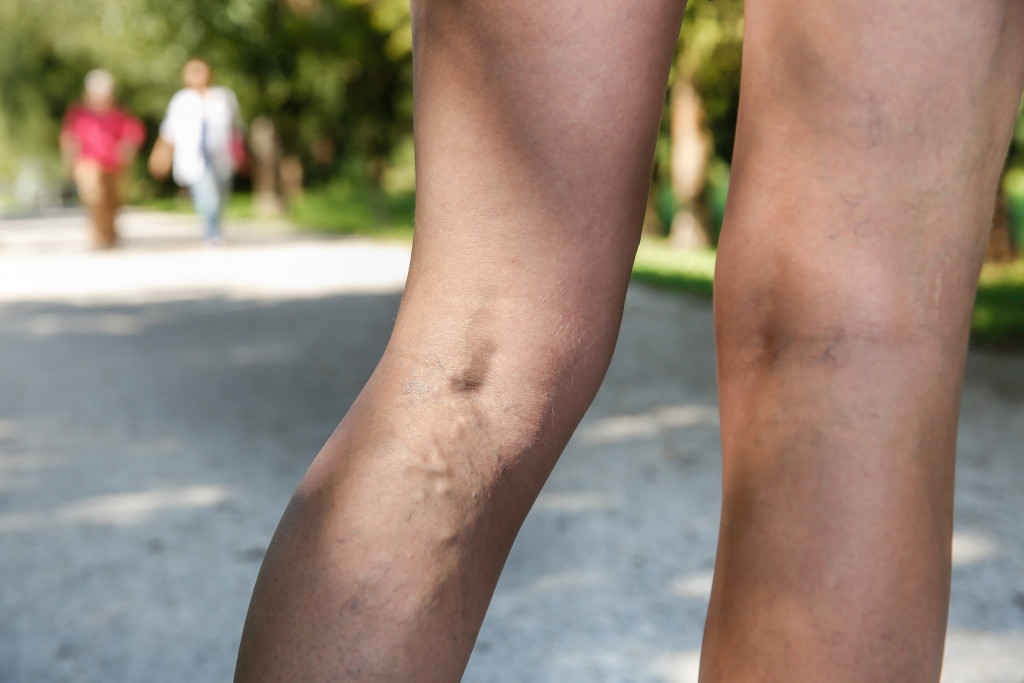- Venous insufficiency is a condition that can be controlled and managed with early detection, regular check-ups, and professional consultation.
- Monitoring early symptoms like swelling, varicose veins, and leg discomfort can lead to timely treatment and mitigate the progression of the disease.
- Lifestyle modifications like regular physical activity, a healthy diet, avoiding prolonged inactivity, and leg elevation can significantly contribute to managing the condition.
- Wearing compression stockings can alleviate symptoms, promote blood circulation, and prevent complications, improving the quality of life for those with venous insufficiency.
When dealing with venous insufficiency, there are key points to remember that can help manage the condition effectively. Read on to learn more.
Learn about the causes.
Understanding the root causes of vein disease is crucial to managing venous insufficiency. Learning about the causes of vein disease can provide valuable insights into preventive measures and tailored treatments. Fundamentally, vein disease arises when the veins’ valves, which prevent blood from flowing backward, become damaged or weak.
This malfunction can result from age, genetic predisposition, pregnancy, obesity, or prolonged periods of standing, resulting in blood pooling in the legs. It’s important to note that while these are common causes, vein disease can also occur in seemingly healthy individuals with no apparent risk factors.
Hence, acquiring knowledge about the causes of vein disease and regularly consulting healthcare professionals can significantly help in better management and early detection of the condition.
Regular check-ups.

Regular check-ups with a healthcare professional are integral to managing venous insufficiency. These routine visits allow for timely detection of changes or progression in the condition, ensuring any necessary adjustments to treatment can be made swiftly.
They also allow you to discuss any concerns or symptoms you may have noticed, ensuring comfort and understanding of your condition. Regular check-ups may also involve using diagnostic tools such as ultrasound to monitor blood flow in your veins. Here are some things you may learn during your checkups:
Early identification of symptoms.
Early identification of symptoms is paramount in managing venous insufficiency. Being vigilant about changes in your body can lead to early diagnosis, increasing the chances of effective treatment and recovery. Symptoms of venous insufficiency can range from subtle signs such as mild leg discomfort or fatigue to more noticeable ones like leg swelling, varicose veins, and skin changes.
Some people may also experience a feeling of heaviness in the legs, cramping, or throbbing. It’s crucial to remember that these symptoms might worsen after long periods of standing or sitting. Therefore, seek medical advice promptly if you observe any of these symptoms. Early detection and treatment can significantly slow down the progression of the disease, improve your quality of life, and potentially prevent serious complications such as leg ulcers or blood clots.
Adopt a healthy lifestyle.

Adopting a healthy lifestyle can significantly contribute to managing venous insufficiency. Regular physical activity, specifically exercises that work your legs, like walking or cycling, can improve venous circulation. Moreover, balanced nutrition helps maintain a healthy weight, which lessens the pressure on your veins and reduces the risk of venous insufficiency.
Avoiding prolonged standing or sitting, especially in one position, can also prevent blood from pooling in your leg veins. Additionally, elevating your legs when at rest can facilitate better blood flow. For those who smoke, quitting can improve overall vein health.
Lastly, wearing compression stockings, as recommended by a healthcare professional, can also aid in managing the symptoms by promoting better blood flow and reducing swelling in your legs. Thus, lifestyle modifications can be vital in controlling venous insufficiency and enhancing your overall well-being.
Minimize sedentary activities.
Minimizing sedentary activities is crucial in managing venous insufficiency. Prolonged periods of inactivity can result in blood pooling in the legs, exacerbating venous insufficiency symptoms. Make it a point to move around every 30 minutes when engaged in activities that require prolonged sitting, such as desk work, television watching, or reading.
Simple movements such as leg stretching, ankle flexing, or a brief walk can help stimulate blood circulation in your legs. If your work involves long-standing periods, try shifting your weight from one foot to the other and taking regular breaks. Additionally, lying down with elevated legs can provide relief by encouraging better blood flow. Minimizing sedentary activities can help promote vein health and reduce discomfort due to venous insufficiency.
Elevate your legs.
Elevating your legs can be a simple yet effective strategy for managing venous insufficiency. By raising your legs above the level of your heart, you can facilitate the downward flow of blood from the legs, reducing swelling and alleviating discomfort. This practice can be particularly beneficial after long periods of standing or sitting.
You can achieve this by using a recliner, putting a pillow under your legs while lying down, or using a footrest when seated. Furthermore, elevating your legs for 15-30 minutes several times throughout the day is recommended.
If you have severe venous insufficiency, your healthcare provider may suggest sleeping with your legs elevated. This habit and other lifestyle modifications can significantly improve your symptoms and quality of life.
Wear compression stockings.
Wearing compression stockings is an effective, non-invasive method of managing symptoms of venous insufficiency. These special socks are designed to apply gentle pressure to your legs and ankles, promoting blood flow toward your heart and preventing blood from pooling in your veins.
They can alleviate swelling, heaviness, aching, and leg fatigue. Compression stockings come in various sizes, lengths, and compression levels, and your healthcare provider can guide you in choosing the most suitable type for your condition. It’s important to wear them correctly and consistently throughout the day, removing them at night.
Despite their benefits, compression stockings are not a cure for venous insufficiency, but they can considerably improve your quality of life by managing symptoms, slowing disease progression, and minimizing the risk of complications.
It’s important to remember that you are not alone in this journey, and professional help is always available. Remember, early detection and intervention can significantly affect your quality of life. Make your health a priority – you’re worth it!
